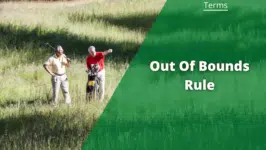The game of golf has been around for centuries and all efforts are still made to take part in this wonderful game, be it for exercise and fresh air purposes or a new sporting challenge.
There is nothing better than playing a round of golf with your friends or business associates, whatever the level of competence may be.
The problem arises when the “hit and giggle” turns into something more serious.
Many aspirant golfers would have participated in other ball sports be it hockey, cricket, football, tennis, or other outdoor activities.
The major difference is that in all the sports mentioned, the ball is in motion.
Should your opposition be a better player, it is sometimes a problem to enjoy it, knowing that competency will win the day.ie tennis.
Golf on the other hand is an individual game and the handicap system ensures that any player can compete in a fair and equal manner.
However.
The main difference is the ball is stationary and once you have placed it by hand to start your 1st hole, it beckons you to hit it.
AND
Herein lies the challenge.
Golf is undoubtedly one of the most difficult sports to master. You only have to watch the Pros play to understand this. They spend every day practicing or playing to hone their skills.
This still does not guarantee a victory on any given day.
The margin for error is minuscule, and to coin a phrase “it will go where you hit it”
The internet is filled with instruction videos, golf blogs (like this!), and other materials to assist the “newbie” to develop his or her game. You can also take online golf lessons and start improving your game.
Professional golf teachers are readily available to improve your game.
One of the most frequently asked questions is:
Should I go for lessons, how much will they cost, and how many will I need?
Before answering this question, the aspirant golfer needs to answer a few questions of their own:
What Are My Aspirations?
How much time can/will I devote to practicing and improving my skills?
How good am I at ball sports in general and is my co-ordination good?
Once you have decided on the above, the decision on lessons is put in to perspective.
Let’s get started.
Firstly, before going for lessons play golf with your friends and hit balls on the range until you are fairly confident in making contact with the ball on each swing. (don’t laugh at this statement because unfortunately, it is well-founded!)
It does not matter in which direction it goes as long as the clubhead and ball make contact.
Golf as a sport, like any other game, has fundamentals that need to be adapted, to improve your consistency and overall playing ability.
The Grip
Your hands are the only contact you have with the club, which in turn you swing, to create momentum to move the ball forward.
Sounds pretty simple, but when you get your grip right your game will improve immeasurably.
Remember the objective is to get the clubhead back to the contact area and strike the ball with a square clubface.
Stance, Posture, and Address
The way you stand at the address position when preparing to hit the ball will have an outcome on the direction the ball will travel.
Your posture is also very important as you need to hold this same position throughout the swing.
Alignment and Ball Position
Aiming in the direction you wish to hit the ball and the positioning of the ball within your stance influences the shape and outcome of the shot.
Swing Plane
The definition of swing plane is the arc in which you swing the club to generate velocity. ( It can be shallow or steep.)
Take Away and Backswing
When the club first moves away from the ball to start your backswing, it should be dragged along the grass for the 1st 6 inches.
Downswing and Transition
When you start your downswing towards the ball there is a correct sequence of movements to develop power in the swing.
Weight Shift and Shoulder Turn
Transfer of your weight and your shoulder turn create the mechanism for power within the swing.
Balance and Rhythm
Keeping your balance throughout the swing and creating a smooth rhythm will improve your ball-striking capability.
These are the fundamentals that you need to ingrain into your golf game. If they sound or seem complicated, don’t worry, because if you are capable of hitting the golf ball, you are doing some of these already.
Golf can be broken down into another 4 departments:
Long Game
This is your driver, hybrids, long and medium irons.
The driver is one of the most difficult clubs to master, along with your 2,3, and 4 iron.
Inevitably the reason for this is that the tendency is to try and hit these too hard.
Short Game
Your irons from 8 to sand-wedge are your scoring irons.
These irons are easier to hit consistently because of the loft and often referred to as the recovery irons.
Accuracy is more important than distance, so swing them smoothly.
Chipping
When you learn the art of chipping you will be able to manufacture short shots that will shave many strokes off your handicap.
When starting don’t try the fancy flop shots that you see the Pros play, but rather get the ball on the green and let it run to the hole.
Putting.
Putting is the most important part of game improvement, and besides being the easiest to spend time on, is the least practiced by the majority of amateur golfers.
You can practice on the carpet at home in the evening or on those rainy days.
Going to your club to practice on the putting green, in your work clothes, is very easy and can be done after work.
Any low- handicap golfer can teach you the basics and thereafter it becomes a personal preference of style, comfort over the ball, and stance.
Your local retail golf store or club pro shop can advise you on the type of putter best suited to your stroke. They will allow you to test it at their facilities.
Repetition of your stroke via muscle memory is the ultimate goal.
The only reason golfers don’t practice putting is it does not have the same appeal as bombing the ball off the tee on the range.
I can assure you that when you become proficient at hitting the ball and improving your game, you can destroy your opposition’s morale by your ability to putt.
It is the best way to lower your score.
Now that we have outlined the fundamentals and added a description of what the aspiring golfer needs to learn, we come back to the number of lessons required.
They can be put together in parcels:
A – Grip, stance, posture, and address.
B – Alignment and ball position.
These cover the fundamentals before you strike a ball.
C – Swingplane, take away, back and downswing, transition, weight shift, shoulder turn, balance, and rhythm.
These cover the fundamentals of movements and sequencing required when starting the swing.
It all looks rather complicated when you read the above, but I can assure you that you are probably executing some if not most of these moves already.
Maybe just not in the correct sequence.
Lessons:
Negotiate a 5 -lesson package with an established golf teaching professional who:
- You can relate to and understand.
- Who can simplify all the fundamentals required.
- Has patience and enjoys teaching.
- Has good facilities and the latest technical analysis.
Spread the lessons over some time so that you can practice the fundamentals you are taught in each lesson.
It is pointless to arrive at your next lesson when you have not at least grasped the previous lesson and put in some practice.
If you have not had the time to practice, cancel, and book another date.
Remember it is your teacher’s business and they want to sell as many lessons as he can in as short a time-frame as possible.
Don’t be hustled.
Set your targets and goals and be disciplined with your practice.
A word on practice
Standing on the range and pounding balls without any objective, is not practice!
Practice is for building muscle memory so that you can repeat the swing moves under pressure.
Summary
Have patience and stay focused on what you set out to achieve with your golf game.
Don’t have too high expectations in the beginning as it will only frustrate you and take away the pleasure of learning.
This is only the beginning of your journey, and you are likely to take more lessons as you progress.
A final word on swing tempo: If you talk and move fast, and have a “hurry-hurry” type personality, then swing the golf club in the same manner.
Welcome to this fabulous game that will teach you character and determination.
It will surely put the beginner on the right track to start.
Related Articles
- How to Swing a Golf Club -The Mechanics Involved For a Perfect Shot
- The Best Drivers for Beginners
- Can You Play Golf by Yourself
- The Best Irons for Beginners
- Understanding Golf’s Handicap System a Beginner’s Guide
Nick is the founder of GolfSpan and an avid golfer. He's not quite a pro but has over 15 years of experience playing and coaching golfers worldwide. His mission is to bring the golfing community a better experience when it comes to choosing the right golf gear and finding the right setup for your game.






